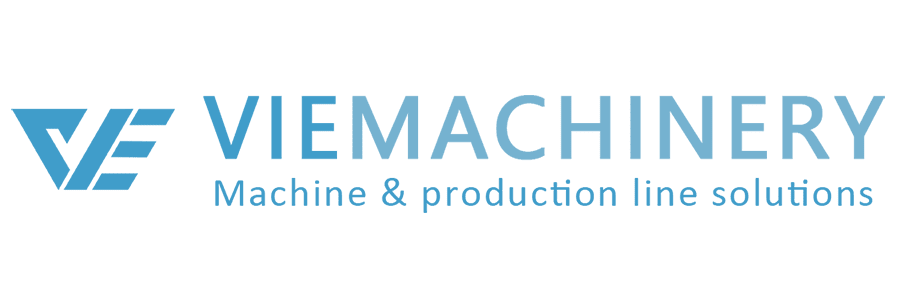In today’s eco-conscious world, paper bags have become a popular alternative to plastic bags. For businesses looking to delve into the production of paper bags, understanding the various types of paper bag making machines, their features, and costs is essential. This article will guide you through the different options available, ensuring you make an informed decision for your business.
Types of Paper Bag Making Machines
The market offers a variety of paper bag making machines, each designed to cater to different production needs. Here, we’ll explore some of the most common types:
Fully Automatic Paper Bag Making Machines
Fully automatic machines are designed to handle the entire process of paper bag production with minimal human intervention. These machines can automatically feed, cut, fold, and seal paper to produce bags. They are ideal for large-scale production due to their efficiency and speed.
Semi-Automatic Paper Bag Making Machines
Semi-automatic machines require some level of manual operation, such as feeding the paper or handling the finished product. While they are not as efficient as fully automatic machines, they are more affordable and suitable for small to medium-sized businesses.
Manual Paper Bag Making Machines
Manual machines are the most cost-effective option but require significant human labor. These machines are suitable for very small businesses or startups looking to minimize initial investment costs.
Key Features to Consider
When choosing a paper bag making machine, consider the following features to ensure it meets your production needs:
Automation Level
The level of automation can significantly impact the machine’s efficiency and cost. Fully automatic machines provide higher productivity but come with a higher price tag. On the other hand, semi-automatic and manual machines are more affordable, though less efficient.
Bag Types and Sizes
Different machines are capable of producing various types and sizes of paper bags. For instance, some machines can produce square bottom bags with handles, which are popular in the retail industry. Consider the types of bags you need to produce and ensure the machine can accommodate those specifications.
In-Line Printing
In-line printing capabilities allow you to print designs, logos, or text directly onto the paper bags during production. This feature can save time and costs associated with separate printing processes. If branding is important for your business, look for machines with in-line printing options.
Production Speed
The speed at which a machine can produce paper bags is crucial for meeting demand. Fully automatic machines typically offer the highest speeds, making them suitable for high-volume production. Semi-automatic and manual machines are slower but may be sufficient for lower production needs.
Cost Options for Paper Bag Making Machines
The cost of paper bag making machines varies widely based on their features and capabilities:
- Fully automatic machines: $50,000 – $150,000
- Semi-automatic machines: $10,000 – $50,000
- Manual machines: $1,000 – $10,000
For businesses on a tight budget, semi-automatic or manual machines are more accessible options. However, investing in a fully automatic machine can provide long-term cost savings through increased efficiency and higher production rates.
Top Brands and Models
The market for paper bag making machines is competitive, with several reputable brands offering various models. Some of the top brands include:
- Windmoeller & Hoelscher
- Holweg Weber
- Newlong Machine Works
- Sunhope Packaging Machinery
Each brand offers different models with unique features, so it’s essential to compare options based on your specific needs. For instance, VIE Machinery machines are known for their advanced technology and high production speeds.
Case Studies and Practical Examples
Let’s look at a couple of case studies to understand how different businesses have benefited from various paper bag making machines:
Case Study 1: Small Retail Business
A small retail business invested in a semi-automatic paper bag making machine to produce customized bags for their store. With an initial investment of $20,000, they were able to produce 5,000 bags per month, significantly reducing their packaging costs and enhancing their brand image.
Case Study 2: Large Manufacturing Company
A large manufacturing company opted for a fully automatic machine worth $120,000. This machine allowed them to produce 50,000 bags per month, meeting their high production demands efficiently. The in-line printing feature also helped them streamline their branding process, saving time and additional costs.
FAQ
What is the average lifespan of a paper bag making machine?
The average lifespan of a paper bag making machine can range from 5 to 15 years, depending on the brand, model, and maintenance practices.
Can I upgrade a semi-automatic machine to a fully automatic machine?
In some cases, it’s possible to upgrade a semi-automatic machine with additional components to increase automation. However, it’s often more cost-effective to invest in a fully automatic machine from the start if high automation is a priority.
Are there financing options available for purchasing paper bag making machines?
Yes, many manufacturers and suppliers offer financing options or leasing plans to help businesses manage the initial investment costs. It’s advisable to explore these options to find a plan that suits your financial situation.
How can I ensure the quality of the paper bags produced?
Ensuring the quality of paper bags involves regular maintenance of the machine, using high-quality raw materials, and conducting periodic quality checks during production.
What kind of maintenance is required for paper bag making machines?
Regular maintenance includes cleaning, lubrication, inspection of components, and timely replacement of worn-out parts. Following the manufacturer’s maintenance guidelines can help extend the machine’s lifespan and ensure consistent performance.
With the increasing demand for eco-friendly packaging solutions, investing in a paper bag making machine can be a profitable venture for many businesses. By understanding the different types, features, and costs, you can make an informed decision that aligns with your production needs and budget.

